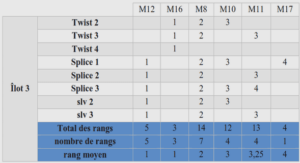Photosynthesis and Calcification in aquatic environments a review about the role and the behaviour of Cyanobacteria and Coccolithophores
The primary production is performed by microscopic organisms called phytoplankton1. Phytoplankton are autotrophic prokaryotic or eukaryotic algae that form the base of the food chain in the oceans. They live in the top 30-meter layer of the sea called the euphotic zone (where light can penetrate into the seawater), where they can use the energy of the sunlight to grow. Phytoplankton in today’s oceans consist mostly of Cyanobacteria, Diatoms, Dinoflagellates and Coccolithophores. They include photoautotrophs from a variety of groups of organisms, prokaryotic bacteria (both eubacteria and archaea) and three eukaryote categories: green, brown and red algae. Photosynthetic phytoplankton vary in size between large (> 2–5 m) and small (< 2m). The phytoplankton biomass accounts for less than 1% of the total biomass living freely in the open sea. Cyanobacteria (also called blue-green algae) in the genera Prochlorococcus and Synechococcus are picophytoplankton (the smallest phytoplankton). Like all bacteria, cyanobacteria are prokaryotes, which can be distinguished from eukaryotes by the absence of a cell nucleus and mitochondrion. In the case of photosynthetic organisms, prokaryotes are also distinguished from eukaryotes by the absence of chloroplasts. Cyanobacteria can be subdivided into two varieties: those that can fix nitrogen and those that cannot fix nitrogen. Cyanobacteria that can fix nitrogen have an advantage over other bacteria in nutrient poor waters, particularly those which are depleted in nitrogen sources (mainly nitrate or ammonia).
Interestingly, the explanation as to why many cyanobacteria and eukaryotic microalgae have the ability to tolerate very high CO2 concentrations, in some cases well above 50% CO2 (Miyachi et al., 2003; Gressel, 2008; Papazi et al., 2008), might be found in the CCM. Inhibition of Rubisco through acidification under high CO2 conditions is prevented by the CA reaction and by state II transition of Photosynthesis Electron Transport (PET) (rearrangement of the phycobilisomes to favour light absorption by PS I) (Miyachi et al., 2003). resulting in a nano-scale carbonate oversaturation condsition favourable for calcium carbonate precipitation. Nucleation could take place, and may be facilitated by the membrane surface that provides nucleation sites (Obst et al., 2009). From then on, the crystal growth could proceed as a strictly chemical process. The ionic strength was shown to catalyze calcite nucleation (Bischoff, 1968b). Zuddas & Mucci (1998) postulated a two-step precipitation process of adsorption followed by ion incorporation into the crystal lattice. For example, in the laboratory studies that the strain Emiliania huxleyi EH2 lacks efficient mechanism to facilitate a high DIC gradient between the external medium and the cytosol. This gradient is one to two orders of magnitude smaller than in cyanobacteria and several times smaller than in green algae (Tsuzuki and Miyachi, 1990). Emiliania huxleyi is a marine unicellular calcareous alga which can moderately concentrate DIC (~13-16 times) (Sekino and Shiraiwa, 1994) and presents a low affinity for CO2 (apparent K0.5DIC equal to 55 μM for CO2 at pH 8.0 and 25°C) and an apparent K0.5DIC of 5.5 mM for DIC (K0.5DIC: the concentration of DIC which allows one half of the maximum velocity of photosynthesis) (Sekino and Shiraiwa, 1994). Consequently, the photosynthesis rate is not maximal at present-day marine bicarbonate concentration, and increases under elevated CO2 levels (Herfort et al., 2002). This low-affinity for DIC in E. Huxleyi has also been reported by many others authors (Paasche 1964, Nielsen 1995, Riebesell et al. 2000, Berry et al. 2002, Zondervan et al. 2002, Rost et al. 2003, Leonardos and Geider 2005, Iglesias-Rodriguez et al., 2008). However, the state of the CA remains unclear. The lack of CA in E. huxleyi has been mentioned by many authors (Sikes and Wheeler, 1982; Nimer et al., 1994; Sekino and Shiraiwa, 1994). Conversely, CA induction has been reported at 0.5 mM DIC in E. huxleyi (Herfort et al., 2002), but Quiroga and Gonzalez (1993) hypothesized the suppression of CA induction when growing under high external DIC concentration (above 1 mM). evolutionary mechanism to optimize the use of the dissolved inorganic carbon in low CO2- concentration marine environments, and as an alternative to the CCM developed by the cyanobacteria. This mechanism offers the advantage of maintaining a pH homeostasis in the chloroplast and in the coccolith mineralizing vesicle. Intracellular calcification has also been interpreted as reducing the energy cost for transporting CO2 inside the cells, thus enhancing photosynthetic carbon fixation (Anning et al., 1996).



